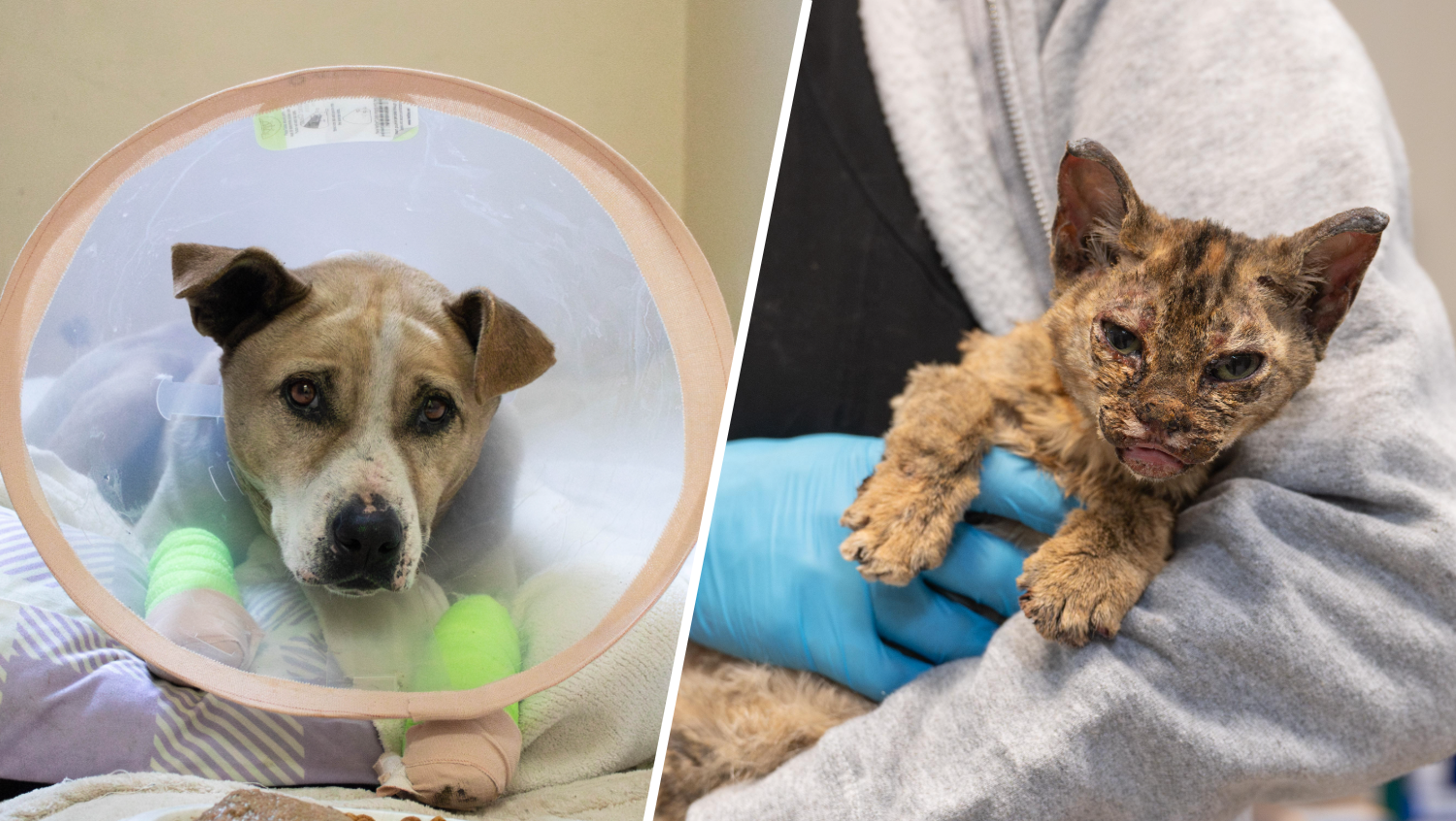
With the arrival of spring, warmer days bring blooming flowers, longer walks outdoors and unfortunately, the return of allergy season. While many pet owners are well aware of their own sneezing fits and itchy eyes, they may not realize that their furry companions can suffer from seasonal allergies too.
However, pet allergy symptoms often present differently, making it crucial for pet parents to recognize the signs and seek proper treatment.
Pet allergies can present as itchiness, hives, hotspots, red or inflamed skin or eyes, excessive licking and even facial swelling, according to veterinary nurse Alina Rojas.
“All symptoms of allergies in pets are incredibly similar to how humans experience allergies,” Rojas explained. “Preventative care for pet allergies involves minimizing exposure to common allergens like pollen, fleas and certain foods.”
Get top local stories in Southern California delivered to you every morning. Sign up for NBC LA's News Headlines newsletter.
While dogs and cats are the most commonly affected, Rojas emphasized that allergies can also impact guinea pigs, rabbits, hamsters, birds, reptiles and even horses.
Understanding what triggers your pet’s allergies is the first step toward effective treatment. According to Best Friends Animal Society, the most common types of allergies in pets include:
Environmental allergies
Much like humans, pets can have heightened immune responses to environmental allergens such as grass and pollen. Mild cases may be alleviated with soothing oatmeal-based shampoos to remove allergens from their fur, along with daily fatty acid supplements to reduce inflammation and strengthen the skin barrier. However, for moderate to severe cases, veterinarians may prescribe topical or oral medications to better manage symptoms.
Flea allergies
Flea Allergy Dermatitis is one of the most common allergic reactions in pets. Even a single flea bite can trigger intense itching, leading to excessive scratching, skin infections, and discomfort. While anti-itch treatments can provide relief, prevention is key. Keeping pets on regular flea prevention medication significantly reduces the risk of severe allergic reactions.
Food allergies
Similar to humans, pets can develop allergies to specific ingredients in their diet. While some may experience digestive issues, food allergies often manifest as persistent skin problems. Identifying the trigger requires an elimination diet, in which a veterinarian may recommend feeding a novel or limited-ingredient diet for several weeks to pinpoint the allergen.
Rojas stresses the importance of regular grooming, including bathing with hypoallergenic shampoos and cleaning ears and paws to minimize allergen buildup.
Maintaining a clean environment, such as frequently washing pet bedding, can also help reduce exposure to irritants.
For pets with more severe allergies, a well-balanced diet that may include hypoallergenic foods and omega-3 supplements can strengthen the immune system and lower the risk of flare-ups. Consistent flea prevention, routine veterinary checkups and closely monitoring symptoms are essential to managing allergies effectively.
In rare but serious cases, pet allergies can escalate into medical emergencies. Rojas warns that signs of anaphylactic shock, difficulty breathing, facial or throat swelling, sudden vomiting or diarrhea, collapse, seizures, or rapidly spreading hives, require immediate veterinary attention.
“When in doubt, it’s always safest to contact your vet,” said Rojas. “My biggest recommendation is to always read your pet’s body language.”
While allergies can be frustrating for both pets and their owners, a variety of treatments and preventive measures can help keep your furry friend comfortable throughout the season. By recognizing symptoms early and taking proactive steps, pet parents can ensure their companions enjoy a healthier, happier spring.



